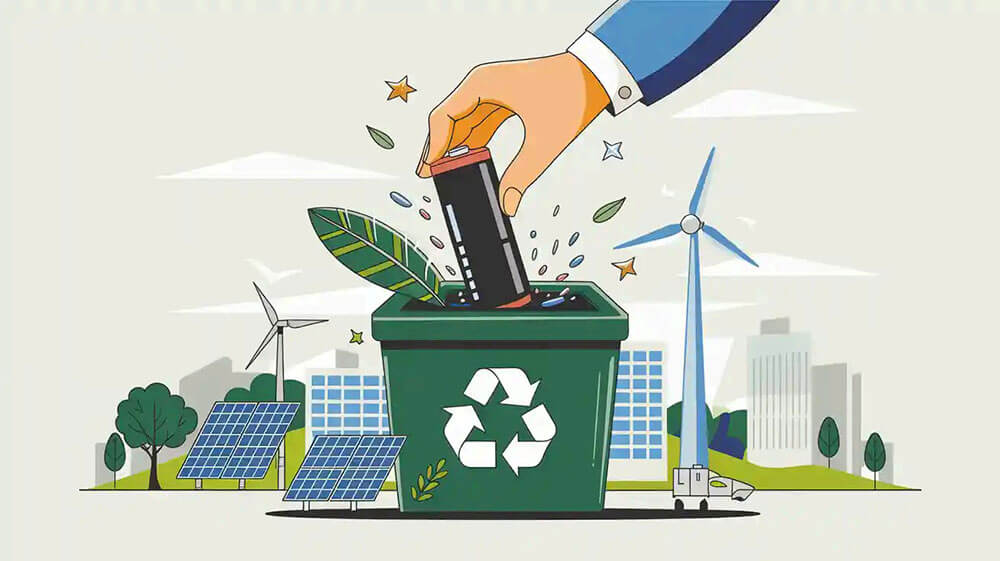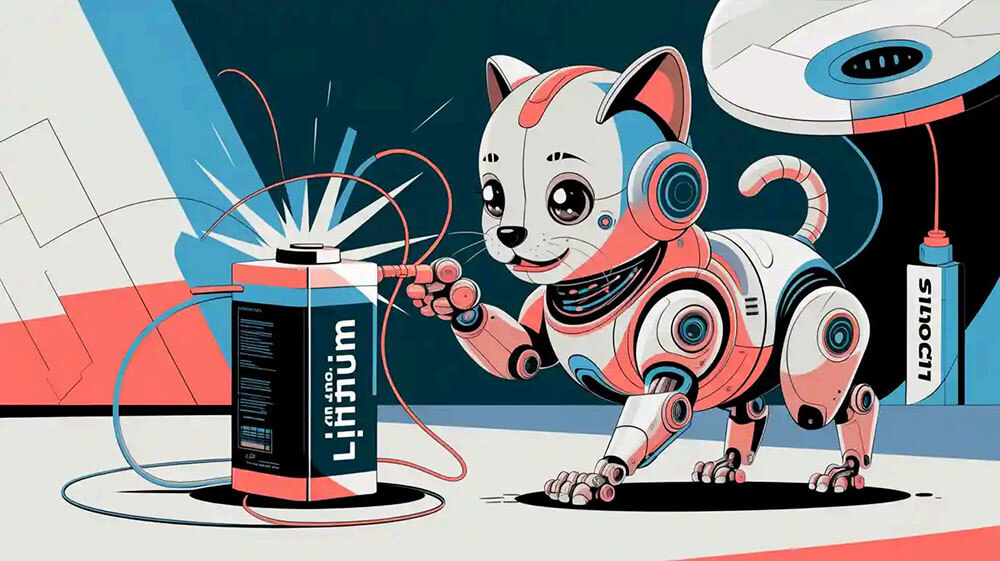Contents
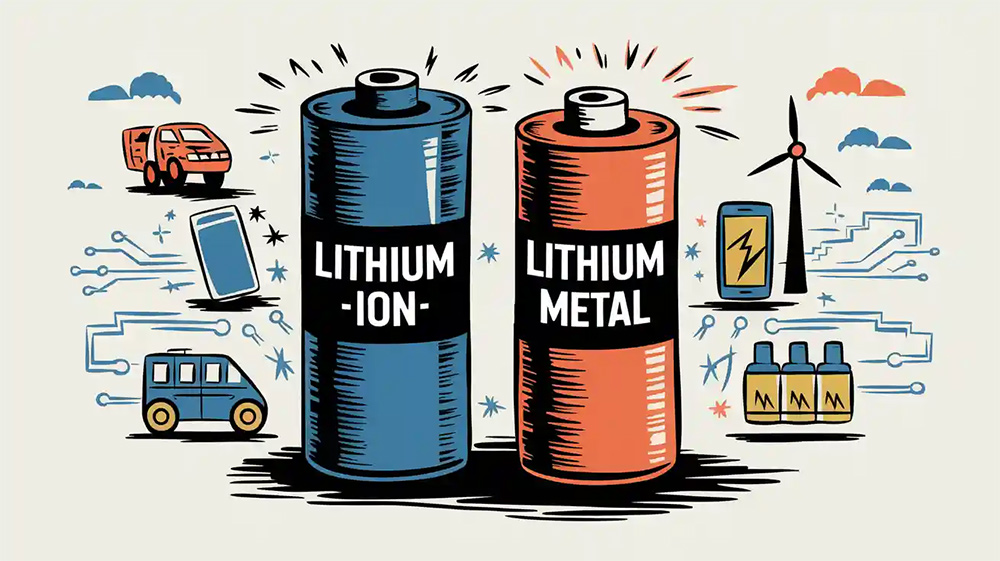
When comparing lithium-ion vs lithium metal batteries, you’ll notice significant differences in energy density, rechargeability, and safety. Lithium-metal batteries offer exceptional energy density, exceeding 500 Wh/kg, while lithium-ion batteries typically achieve around 100-270 Wh/kg. However, lithium-ion batteries excel in rechargeability, with over 1,000 cycles, making them ideal for applications like laptops and medical devices. Safety remains a critical factor, as lithium-metal batteries face challenges like dendrite formation, increasing the risk of short circuits. Choosing the right battery ensures optimal performance and reliability in modern industries, from telecommunications to renewable energy storage.
For insights into sustainable battery solutions, explore sustainability at Large Power.
Key Takeaways
- Lithium-ion batteries :Strengths: High cycle life (1,000+ cycles), mature supply chain (accounts for 90% of the global EV battery market).Applications: Smartphones (e.g., iPhone 15’s 12% increased battery capacity), grid storage (e.g., Tesla Powerwall).
- Lithium metal batteries :Breakthroughs: SES AI’s hybrid lithium metal battery has passed UN38.3 safety certification with an energy density of 450 Wh/kg.Challenges: Dendrite issues restrict usage to specialized applications like NASA’s Perseverance rover backup power.
- Safety is very important. Lithium-ion batteries are built to avoid dangers. Lithium metal batteries have problems like tiny metal growths called dendrites.
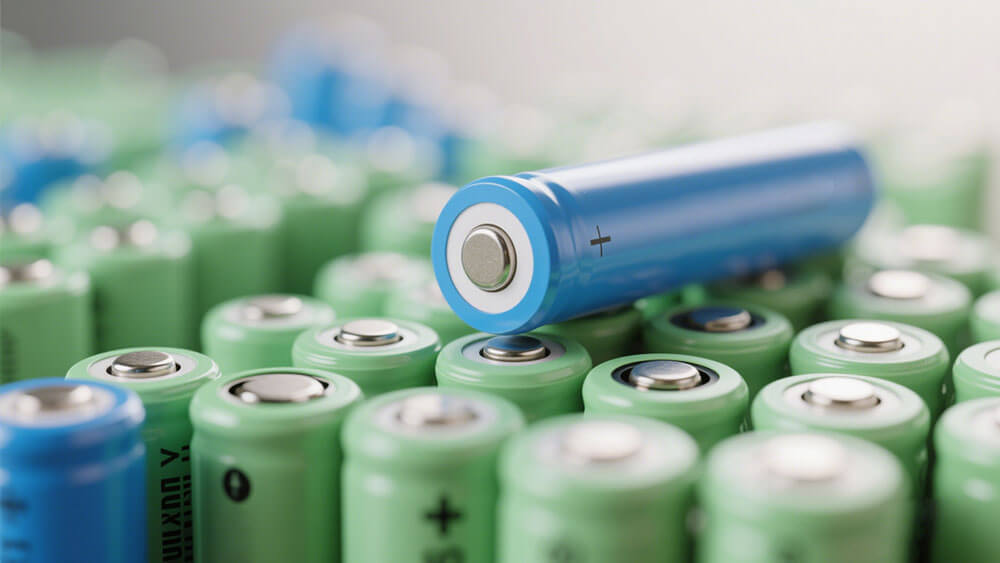
Part 1: Overview of Lithium-ion Batteries
1.1 Lithium-ion Battery Composition
Lithium-ion batteries consist of several key components that work together to store and release energy efficiently. The carbon-based anode and layered oxide cathode design of lithium-ion batteries have been widely validated as the optimal commercial solution. The positive electrode uses active materials like lithium cobalt oxide or lithium nickel cobalt manganate. The negative electrode, typically made of graphite, serves as the site for lithium ion intercalation. A polymer diaphragm with a microporous structure separates the electrodes, allowing lithium ions to pass while blocking electrons. The electrolyte, a carbonate-based solvent containing lithium hexafluorophosphate, facilitates ion movement. These components are housed in a durable case made from materials like aluminum or steel.
| Component | Description |
|---|---|
| Positive Electrode | Active materials include lithium manganate, lithium cobalt oxide, and lithium nickel cobalt manganate. |
| Diaphragm | A polymer film with a microporous structure that allows lithium ions to pass but blocks electrons. |
| Negative Electrode | Typically made of graphite, serving as the site for lithium ion intercalation. |
| Organic Electrolyte | A carbonate-based solvent containing lithium hexafluorophosphate. |
| Battery Case | Can be made from steel, aluminum, nickel-plated iron, or aluminum-plastic films. |
1.2 How Lithium-ion Batteries Work
Lithium-ion batteries operate through the movement of lithium ions between electrodes during charge and discharge cycles. When discharging, lithium atoms in the anode ionize and release electrons. These ions travel through the electrolyte to the cathode, where they recombine with electrons, generating electricity. During charging, the process reverses, with lithium ions moving back to the anode. The small size of lithium ions enables them to pass through the separator efficiently, ensuring smooth operation.
- Lithium ions move between electrodes during charge and discharge cycles.
- Chemical reactions at both electrodes generate charge for the external circuit.
- The small size of lithium ions allows effective movement through the separator.
1.3 Advantages of Lithium-ion Batteries
Lithium-ion batteries offer several advantages that make them a preferred choice for modern applications. They deliver high energy densities, reaching up to 330 Wh/kg, which is significantly higher than alternatives like lead-acid batteries. Their voltage output of 3.6 volts is also superior, providing more power per cell. These batteries have a low self-discharge rate of 1.5% to 2% per month, ensuring long-term reliability. Additionally, they require minimal maintenance and support faster charging, making them ideal for portable devices and electric vehicles.
1.4 Limitations of Lithium-ion Batteries
Despite their benefits, lithium-ion batteries face certain limitations. Safety concerns arise due to the risk of thermal runaway, especially in cells with cobalt cathodes at temperatures above 150°C. Manufacturing defects, such as microscopic metal particles, can lead to short circuits and fires. A notable example includes the recall of nearly six million laptop battery packs by major brands due to a failure rate of one in 200,000. Furthermore, their capacity can degrade over time, particularly under extreme charging conditions, impacting their long cycle life.
- Thermal instability at high temperatures can trigger chain reactions.
- Manufacturing defects may cause short circuits and fires.
- Capacity degradation occurs with prolonged use or improper charging.
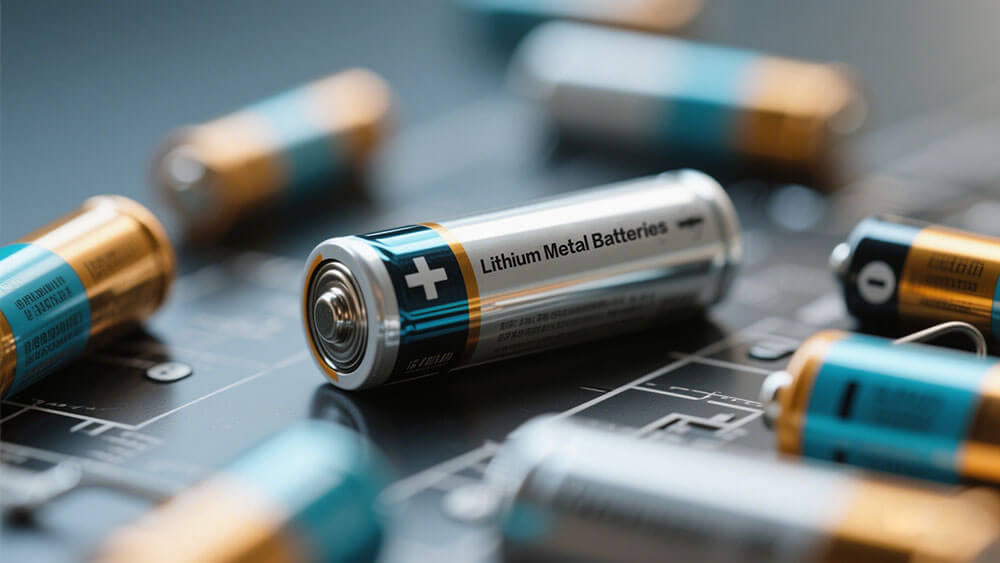
Part 2: Overview of Lithium Metal Batteries
2.1 Lithium Metal Battery Composition
Lithium metal batteries use metallic lithium as the negative electrode, which provides a high-energy source for oxidation reactions. The electrolyte consists of a non-aqueous solution containing lithium salts, such as lithium hexafluorophosphate, facilitating ion movement during charging and discharging. A microporous separator prevents short circuits while allowing lithium ions to flow freely. This unique composition enables lithium-metal batteries to achieve significantly higher energy density compared to lithium-ion batteries.
- Key Components:
- Anode: Pure metallic lithium.
- Electrolyte: Non-aqueous solution with lithium salts.
- Separator: Microporous membrane ensuring safety and ion flow.
2.2 How Lithium Metal Batteries Work
Lithium metal batteries generate electrical energy through the oxidation of metallic lithium at the anode. During discharge, lithium atoms lose electrons, creating lithium ions that migrate through the electrolyte to the cathode. This process releases energy for external use. Unlike lithium-ion batteries, lithium-metal batteries operate on a one-way reaction, making them non-rechargeable. Their high energy density and low self-discharge rate make them ideal for applications requiring long-term energy storage.
| Feature | Lithium Metal Batteries | Lithium-Ion Batteries |
|---|---|---|
| Anode | Metallic lithium | Typically made of graphite |
| Rechargeability | Disposable | Rechargeable |
| Charge/Discharge Process | Oxidation of metallic lithium | Migration of Li+ ions between electrodes |
| Electrochemical Principle | Valence changes occur | No electron gain/loss during charge/discharge |
2.3 Advantages of Lithium Metal Batteries
Lithium-metal batteries offer several advantages that make them suitable for specialized applications. Their higher energy density allows them to store more energy in less space, enhancing the range for electric vehicles and reducing the weight of portable devices. A research team at MIT stated: “The theoretical capacity of lithium metal anodes is 3,860 mAh/g, ten times that of graphite anodes, but requires solid-state electrolytes to address dendrite formation.” They also support faster charging, enabling quicker replenishment of battery power. Additionally, their low self-discharge rate ensures long-term reliability, making them ideal for aerospace and military applications.
- Benefits:
- Higher energy density for compact designs.
- Lighter weight for portable applications.
- Faster charging for improved efficiency.
- Low self-discharge rate for extended storage.
2.4 Limitations and Safety Concerns of Lithium Metal Batteries
Lithium metal batteries face significant safety concerns due to their inherent reactivity. Dendrite formation during charging can pierce the separator, leading to internal short circuits. Thermal instability increases the risk of overheating, fire, or explosion. Research highlights that these limitations have restricted their widespread adoption, despite their high capacity. Efforts to improve safety focus on solid-state electrolytes and advanced separator designs.
Lithium metal batteries are highly reactive, posing risks of overheating and fire. Dendrite formation remains a critical challenge for safe operation.
For more insights into sustainable battery solutions, visit sustainability at Large Power.
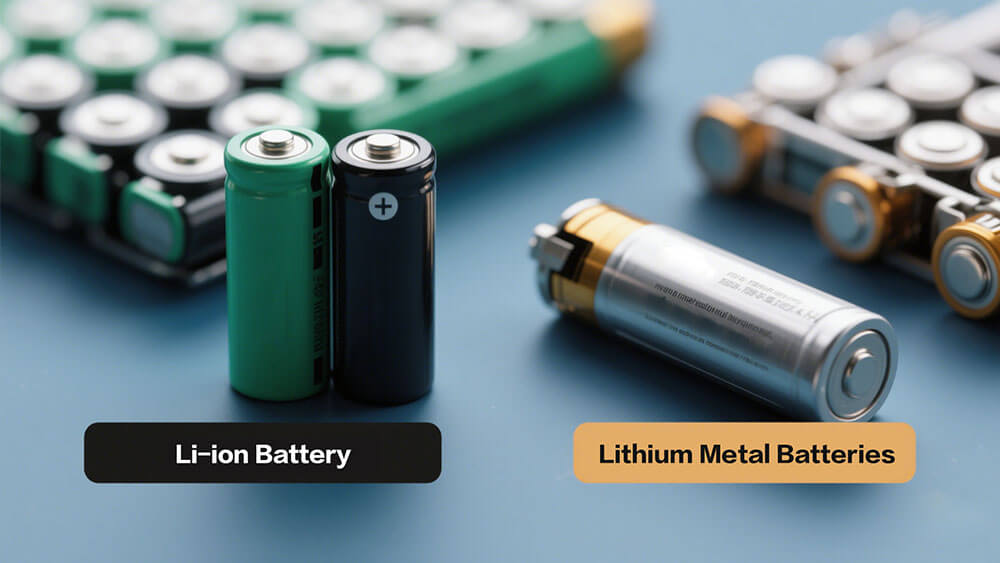
Part 3: Key Differences Between Lithium-ion and Lithium Metal Batteries
3.1 Energy Density and Performance
When comparing lithium-ion vs lithium metal batteries, energy density emerges as a defining factor. Lithium metal batteries boast a significantly higher energy density due to their metallic lithium anode. This allows them to store more energy in less space, making them ideal for applications where compactness and weight are critical. Studies reveal that their specific capacity is over 11 times greater than that of graphite-based lithium-ion batteries. This advantage translates to longer-lasting devices and extended ranges for electric vehicles.
| Metric | Lithium Metal Batteries | Lithium-Ion Batteries |
|---|---|---|
| Energy Density(Wh/kg) | 300-500 (Higher due to metallic lithium anode) | 100-270 (Lower due to carbon-based anode) |
| Specific Capacity | More than 11 times that of graphite anode | N/A |
| Weight | Lighter, ideal for portable applications | Heavier compared to lithium metal |
| Charging Speed | Faster charging capabilities | Standard charging speed |
The higher energy density of lithium metal batteries also supports faster charging, reducing downtime for users. However, lithium-ion batteries remain a reliable choice for applications requiring consistent performance over time.
3.2 Rechargeability and Cycle Life
Rechargeability is another area where these batteries differ. Lithium-ion batteries excel in this aspect, offering hundreds to thousands of charge cycles before significant degradation. This longevity stems from their reversible ion migration process, which minimizes damage during charging and discharging. In contrast, lithium metal batteries face challenges like dendrite formation, which leads to irreversible capacity loss and shorter cycle life.
| Battery Type | Cycle Life Description |
|---|---|
| Lithium-Ion | Good cycle life, lasting hundreds or thousands of charges before degradation. |
| Lithium-Metal | Shorter cycle life due to irreversible damage from dendrites during charging/discharging. |
For applications requiring frequent recharging, such as consumer electronics, lithium-ion batteries remain the preferred choice.
3.3 Safety and Stability
Safety is a critical consideration when selecting a battery type. Lithium metal batteries are highly reactive, with a propensity for dendrite formation and thermal instability. These issues increase the risk of overheating, fire, or explosion. Lithium-ion batteries, while not entirely free from safety concerns, incorporate features like separators and circuit protection to mitigate risks. Studies using thermal runaway analysis highlight the stability of lithium-ion batteries under controlled conditions, making them a safer option for most applications.
Lithium metal batteries require advancements in solid-state electrolytes to address safety concerns effectively.
3.4 Cost and Scalability
Lithium-ion batteries dominate the market due to their mature manufacturing processes and established supply chains. Their scalability makes them cost-effective for mass production, particularly in industries like automotive and consumer electronics. Lithium metal batteries, on the other hand, face commercialization challenges. Issues like dendrite growth and limited cycle life increase production costs, restricting their widespread adoption. Despite their potential, lithium metal batteries remain a niche technology, primarily used in specialized applications.
3.5 Applications in Modern Industries
The key differences between these batteries influence their suitability for various industries. Lithium-ion batteries are widely used in common applications such as smartphones, laptops, and electric vehicles. Their balance of energy density, safety, and rechargeability makes them versatile. Lithium metal batteries, with their high energy density and lightweight design, are better suited for aerospace, defense, and other fields requiring compact, long-lasting power sources. For instance, Boeing utilizes lithium metal batteries in satellite power systems due to their lightweight properties, reducing launch costs.
For more insights into sustainable battery solutions, visit Sustainability at Large Power.
Choosing between lithium-ion vs lithium metal batteries depends on your specific energy storage needs. Lithium-ion batteries excel in rechargeability and safety, making them ideal for electric vehicles and portable devices. In contrast, lithium metal batteries offer unmatched energy density, suitable for aerospace and defense applications.
| Key Factors | Description |
|---|---|
| Energy Cost Optimization | Reducing power peaks and optimizing self-consumption can lower energy costs. |
| Sustainability Reporting | Positive sustainability reports enhance company image and attract investors by demonstrating low greenhouse gas emissions. |
| Security of Supply | Battery storage mitigates risks from power failures, acting as insurance against potential damages. |
For renewable energy storage, lithium-ion batteries provide a reliable and scalable solution. However, advancements in lithium metal technology may redefine future applications. Explore sustainable battery solutions to align with your operational goals.
FAQ
1. What are the main differences between lithium-ion and lithium metal batteries?
The key differences include:
- Energy Density: Lithium metal batteries have higher energy density.
- Rechargeability: Lithium-ion batteries are rechargeable, while most lithium metal batteries are not.
- Safety: Lithium-ion batteries are safer due to advanced designs.
Tip: Choose lithium-ion batteries for everyday devices and lithium metal batteries for high-energy, specialized applications.
2. Can lithium metal batteries replace lithium-ion batteries in electric vehicles?
Not yet. Lithium metal batteries face challenges like dendrite formation and short cycle life. Lithium-ion batteries remain the preferred choice for EVs due to their reliability.
3. How do you decide which battery type suits your needs?
Consider these factors:
- Energy Requirements: High energy density? Opt for lithium metal.
- Rechargeability: Need frequent recharging? Lithium-ion is better.
- Application: Everyday use favors lithium-ion; specialized fields may require lithium metal.
Note: Always evaluate safety and cost before making a decision. Choose a reliable battery manufacturer to make reliable customized batteries for your device.


